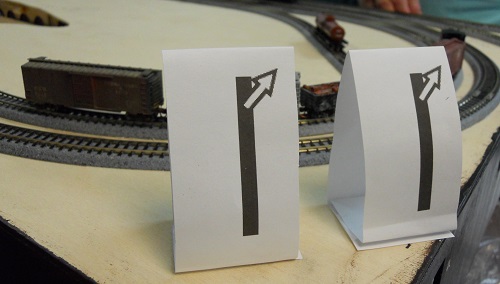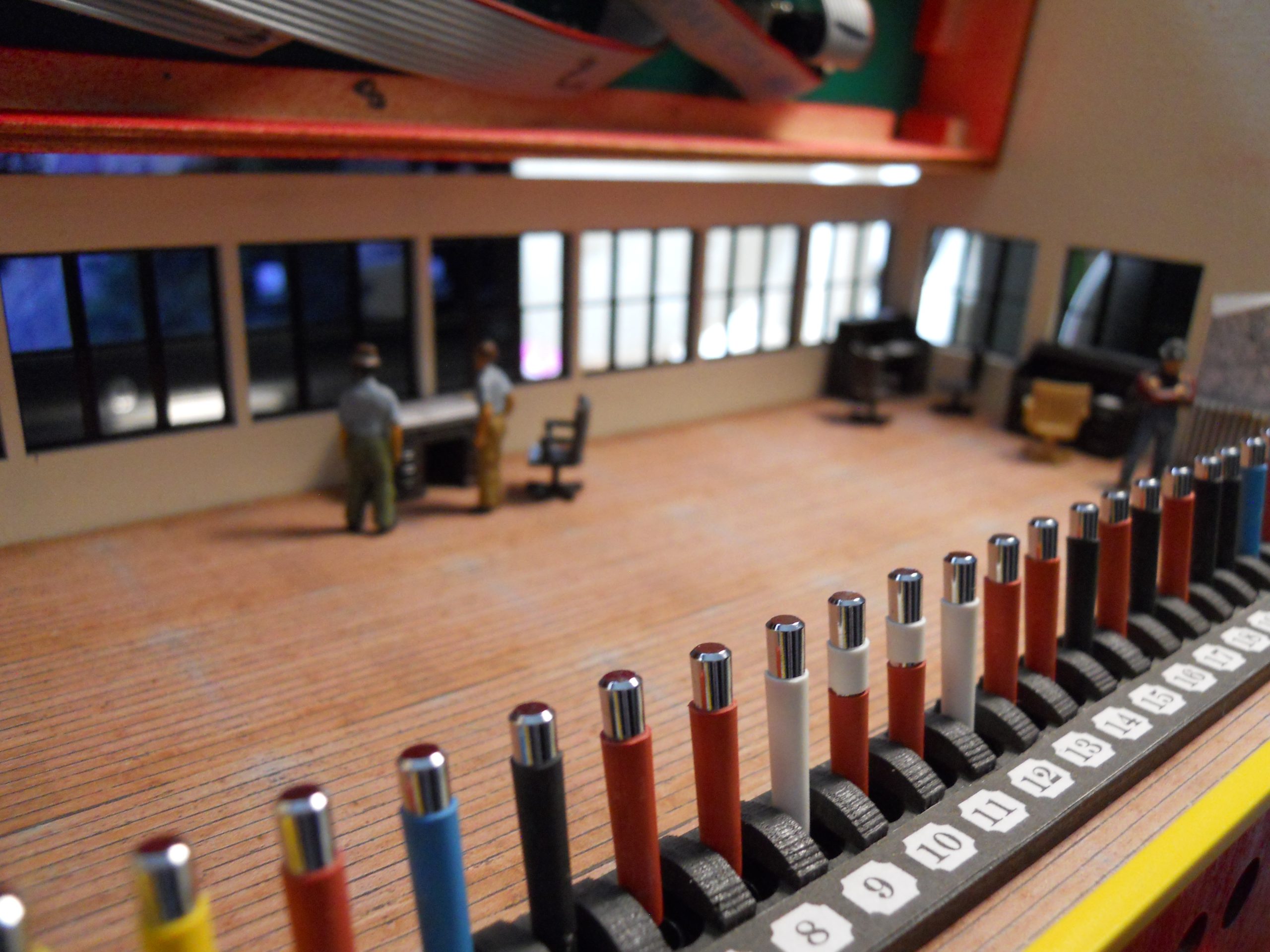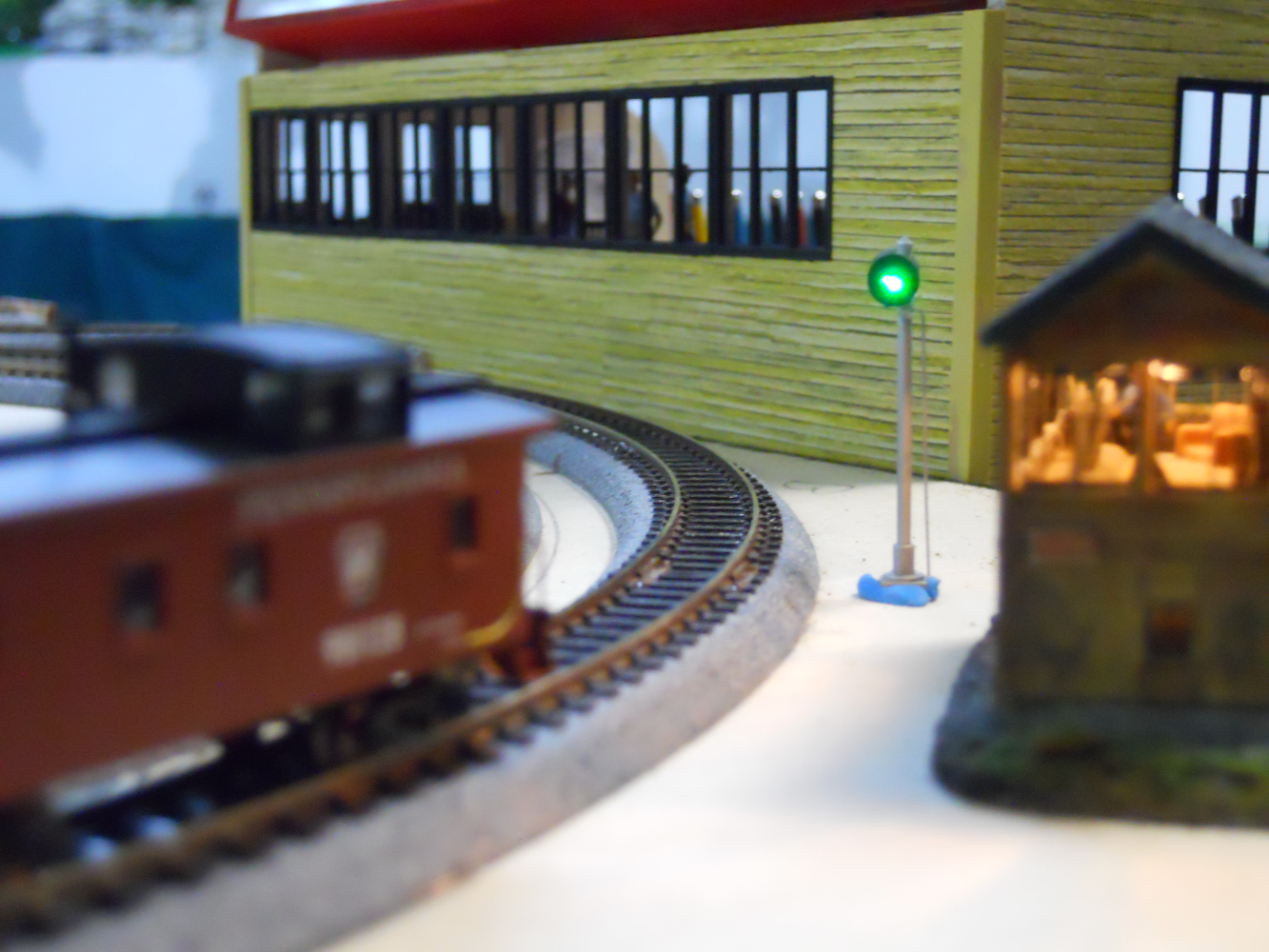On Sheet – Room for Improvements
On Sheet – Room for Improvements
 ne thing about model railroad operations – you don’t have to get it right on the first try.
ne thing about model railroad operations – you don’t have to get it right on the first try.
Nobody can say exactly how something is going to work until they do it. When managing a model pike, you’ll find yourself changing things, cutting in turnouts or altering your schedule. You set something up, maybe it works, maybe it doesn’t. If the latter is true, you try something different.
In my Tuscarora Branch Line, I thought I wanted to run a train order board so that special orders could be “hooped up” (i.e. physically passed) to the engineers. For this, you need two train signals (one facing each approach direction). If the dispatcher gives the station operator an order for a train, the operator sets a signal to red and the train knows to pick up orders. To try it out, I printed out two sheets of paper with “train order boards” printed on either side of the fold (one side clear, the other stop). These were positioned in the location of the tower, the active face towards the operators.

In the above shot, the “clear” signals are facing the operator (and the stop boards are facing the crews) – this is the standard state since train order signals should ALWAYS be red unless the dispatcher confirms there are no orders and that green should be displayed (so if the lonely operator falls down the tower stairs and dies, the trains automatically stop).
We tested with paper signals and it worked fairly well. Dictating the orders took too long so we made pre-printed orders instead. We knew this system worked and so it was incorporated into the interlocking tower. And that looks like this….

This is the view inside the “Tusk” interlocking tower (a control panel mocked up to look like an interlocking tower). The different levers control turnouts, signals and facing-point locks (I’ll have to cover these neat little things in another On Sheet). But the levers in the foreground, number 10 and 11 (red shafts with white top-band) are the interlocking levers. 10 controls the approach from the west, 11 the east.
Specifically, they control a two-head signal outside the interlocking tower (the modeled version, not its big brother control panel). Trust me, behind that green signals is another head, facing the other way.

So here we see the signal behind a westbound freight, set to clear the next eastbound movement so it may blow by Tusk tower with no passed orders.
The point of this slideshow presentation is that you can actually test things before incorporating them. It’s easier to print up two paper train order signals than it is to wire in a system and find out you don’t really like doing it. Here it worked. And my crews have been stopping to pick up orders ever since!
